In preparation for the next leg of the Global Reef Expedition, Dr. Sam Purkis, Jeremy Kerr, Captain Steve Breen and Dr. Andy Bruckner flew over Andros and Abaco Islands, Bahamas on the Golden Eye seaplane. Their goal was to identify specific research sites and to find anchorages for the Golden Shadow; what they saw was two islands with stark differences.
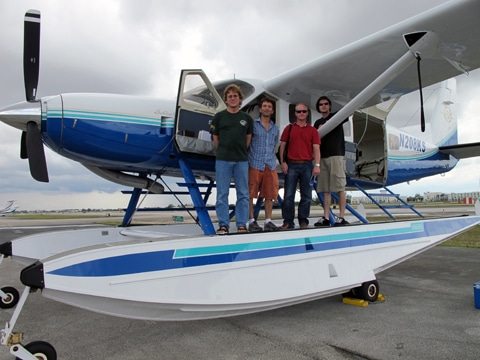
The flight took them from the western (leeward) end of Andros to the southern tip, crossing over sand flats and seagrass beds, many of which were circular and contained a central halo much like that seen in Cay Sal Bank.
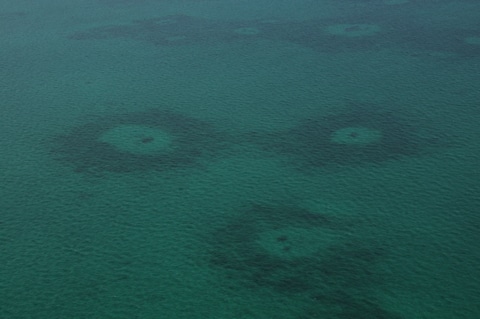
Extensive shallow estuarine lakes were carved into the low-lying karst topography on the western Andros Island, the largest island in the Bahamian archipelago. There were also many deep blue-colored, round sinkholes and in-filled depressions with dense vegetation.
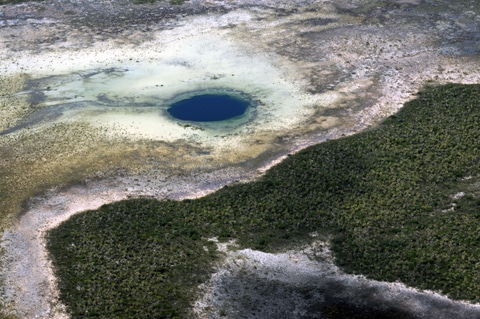
The reef formed a narrow fringe dropping quickly into the Tongue of the Ocean, which reaches depths of 6000 feet or more. A dense elkhorn coral framework with occasional live corals was visible close to the reef crest. Immediately seaward of this, reef habitats were packed full of small pillar-like star coral bommies. Moving sand waves and stabilized underwater dunes covered an extensive area at the northern end of Andros on the landward side of the reef.
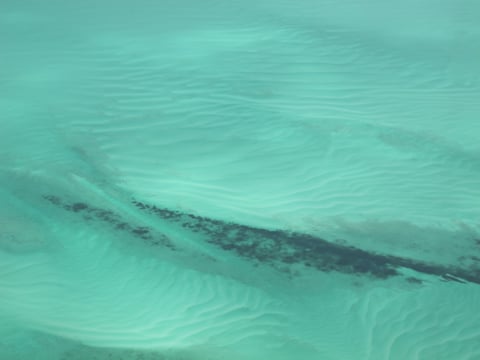
Abaco, the second largest island in the Bahamas was stark contrast to Andros, with a higher density of buildings, golf courses, and other signs of human development.
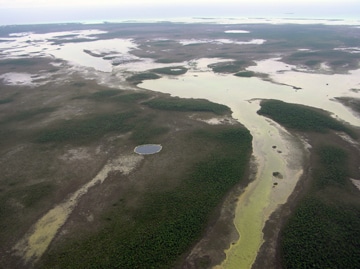
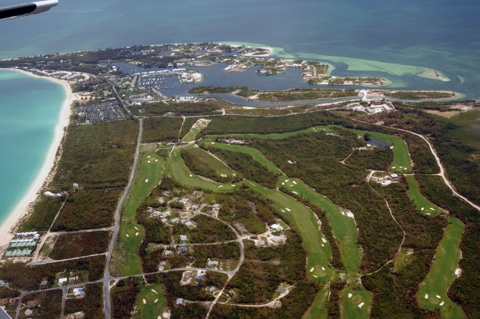
A well-developed barrier reef fringes the eastern end of Abaco island. It is separated from Abaco by a narrow waterway and lies seaward of a line of small islands.
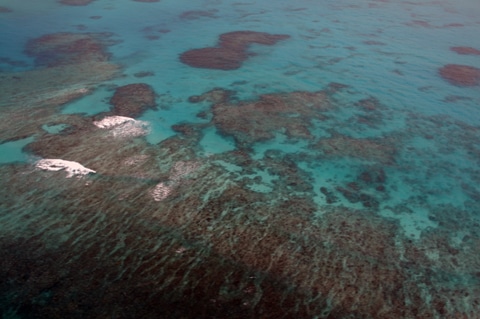
The team took extensive aerial photographs and are now ready for the next leg of the Global Reef Expedition.
(Photo/Images by: 1, 4 Dr. Sam Purkis, 2, 3, 6-7 Dr. Andy Bruckner, 5 Jeremy Kerr)
To follow along and see more photos, please visit us on Facebook! You can also follow the expedition on our Global Reef Expedition page, where there is more information about our research and our team members.


